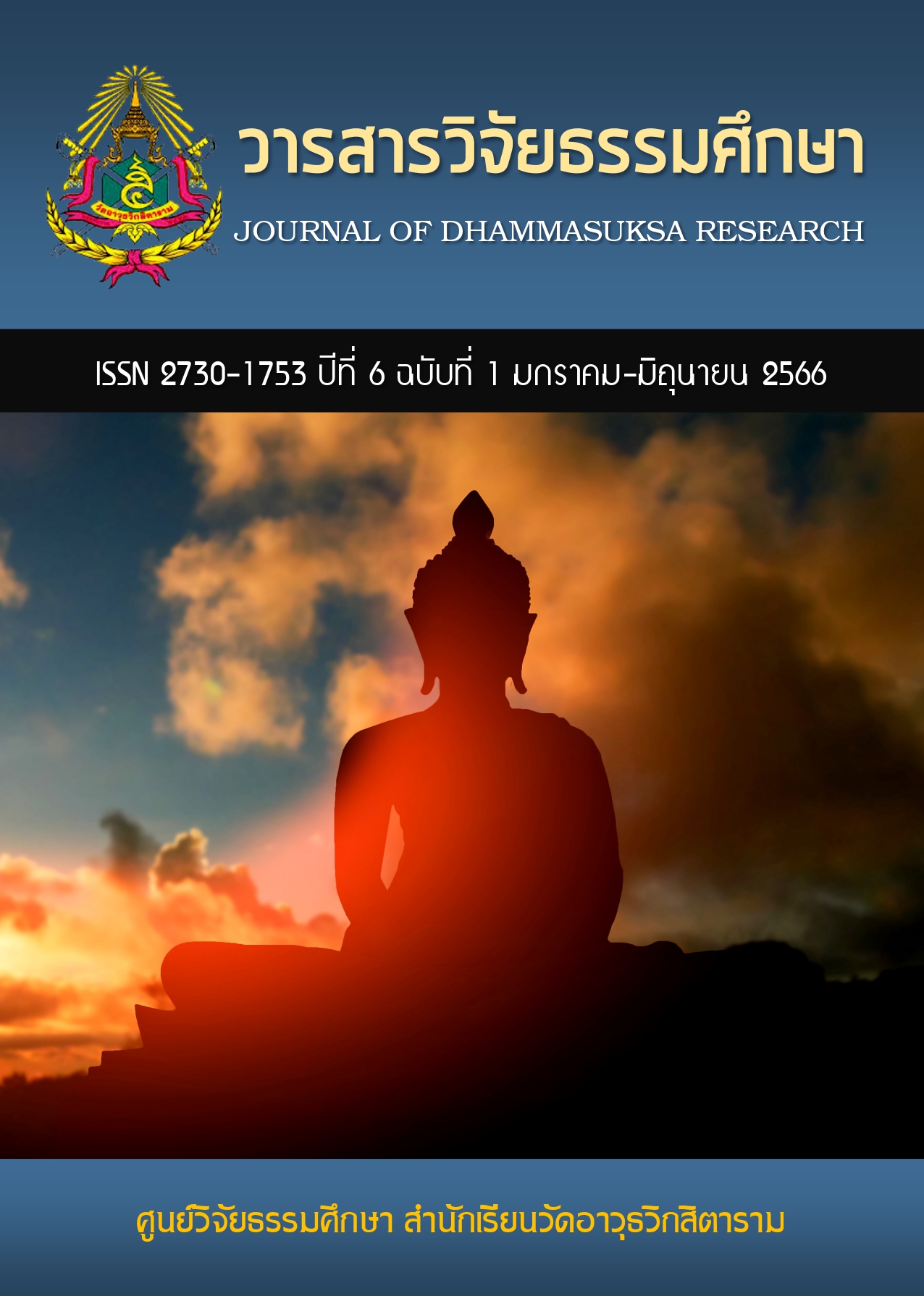THE GUIDELINES OF DEVELOPMENT OF THE EFFECTIVENESS OF THE TEMPLES ADMINISTRATION IN SAMUTSONGKHRAM PROVINCE
Keywords:
Development, Effectiveness, Temples AdministrationAbstract
This research has the objective of studying the guidelines of Development of the Effectiveness of the Temples Administration in Samutsongkhram province on 6 aspects, collecting data from a sample population of 400 abbots from a population of 1,273 Buddhist abbots. Research findings found that the majority of abbots are aged between 41-50 years, having experienced 21-30 Buddhist Lent periods, with Bachelor’s degree or equivalent, completed advanced level Dharma studies, and without Buddhist theological qualifications. Effectiveness in the administration of ecclesiastical affairs was found to be at a high level in every aspect, namely construction/ renovation, administration, social welfare education, religious education, religious propagation, and public assistance.
Results of multiple regression analysis concluded that factors leading to the effectiveness in the administration of ecclesiastical affairs, accordingly ranked from the highest are as follows: the abbot’s leadership (Ŷ = 0.374X1 + 0.491X2) R Square = 0.805), quality of administration (Ŷ = 0.742X1 + 0.325X2 - 0.453X3) R Square = 0.793, and supportive participation (Ŷ = 0.245X1 - 0.120X2 - 0.255X3) R Square = 0.716), whereby the predicting equation is Ŷ = 0.429X1 + 0.421X2+ 0.418X3, R Square value = 0.761.
The research discovered important theories which brings about effective administration of ecclesiastical affairs, namely leadership theory, management theory, and participation theory; and also reflected that temples are still managed in accordance with the closed system organizational theory, since the effectiveness in the administration of ecclesiastical affairs continues to depend mainly on the abbot’s leadership. Hence the administration of ecclesiastical affairs should be increasingly opened up for participation from the external environment, in accordance with the open system organizational theory, and the temple’s administrative work should be restructured so that various responsibilities are delegated to the deputy abbot and the assistant abbot, with the Sangha committee systematically carrying out duties in support of each and every aspect, in line with organizational principles based on legal and rationality.
References
กัลยา วานิชย์บัญชา.(2542). การวิเคราะห์สถิติ สถิติสำหรับการบริหารและวิจัย. กรุงเทพฯ: จุฬาลงกรณ์มหาวิทยาลัย.
กิติมา ปรีดีดิลก. (2529). การบริหารและเทคนิคการนิเทศการศึกษาเบื้องต้น. กรุงเทพฯ: อัษราพิพัฒน์.
เฉลิมชัย เสียงใหญ่.(2551). พระสงฆ์กับภาวะผู้นำ. สมุทรสงคราม : คณะพุทธศาสนา จุฬาลงกรณ์มหาวิทยาลัย.
ทินพันธุ์ นาคะตะ.(2544). พุทธศาสนากับสังคมปัจจุบัน. กรุงเทพฯ: กรุงเทพปริ้นเฮ้า.
พระไตรปิฎกภาษาไทย (2539). ฉบับมหาจุฬาลงกรณราชวิทยาลัย. กรุงเทพฯ: โรงพิมพ์มหาจุฬาลงกรณราชวิทยาลัย.
พระราชญาณวิสิฐ (เสริมชัย ชยฺมงคโล). (2545). หลักธรรมสู่ความสำเร็จและสันติสุข. กรุงเทพฯ: โรงพิมพ์ธรรมสภา.
พระราชวรมุนี (ป.อ. ปยุตฺโต). (2529). การศึกษาคณะสงฆ์ไทย ปัญหาที่รอทางออก. กรุงเทพฯ: มูลนิธิโกมลคีมทอง).
พระธรรมกิตติวงศ์ (ทองดี สุรเตโช ป.ธ.9). (2547). คำวัดที่ชาวพุทธควรรู้. พิมพ์ครั้งที่ 1. กรุงเทพฯ: ธรรมสภา และสถาบันบันลือธรรม.
พระธรรมปริยัติโสภณ. (2548). การบริหารกิจการคณะสงฆ์แนวพุทธ. กรุงเทพฯ: โอเดียนสโตร์.
Additional Files
Published
How to Cite
Issue
Section
Categories
License
Copyright (c) 2023 Journal of Dhammasuksa Research

This work is licensed under a Creative Commons Attribution-NonCommercial-NoDerivatives 4.0 International License.


